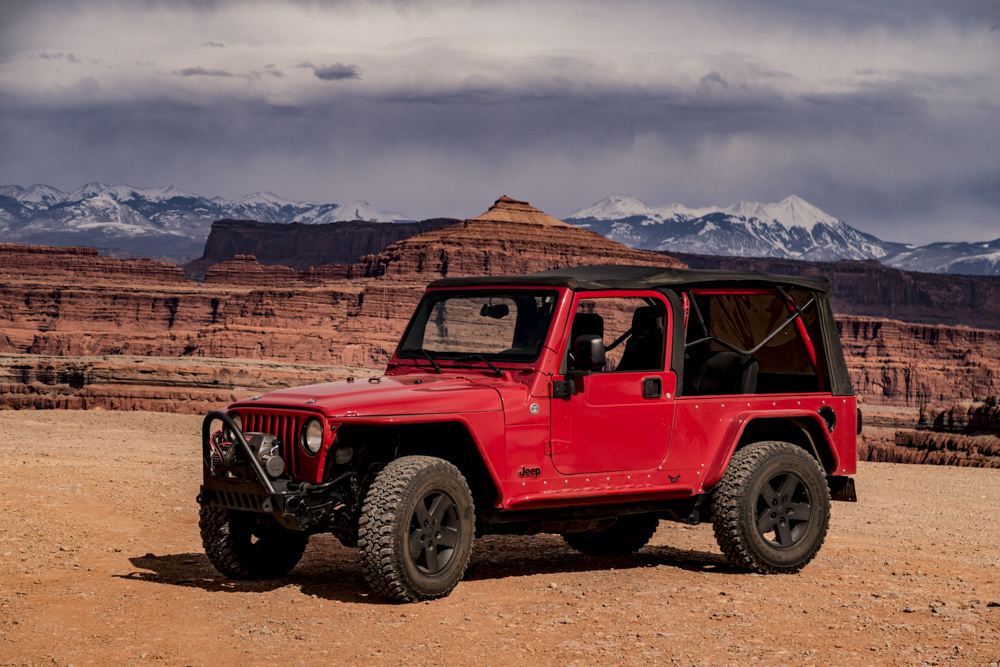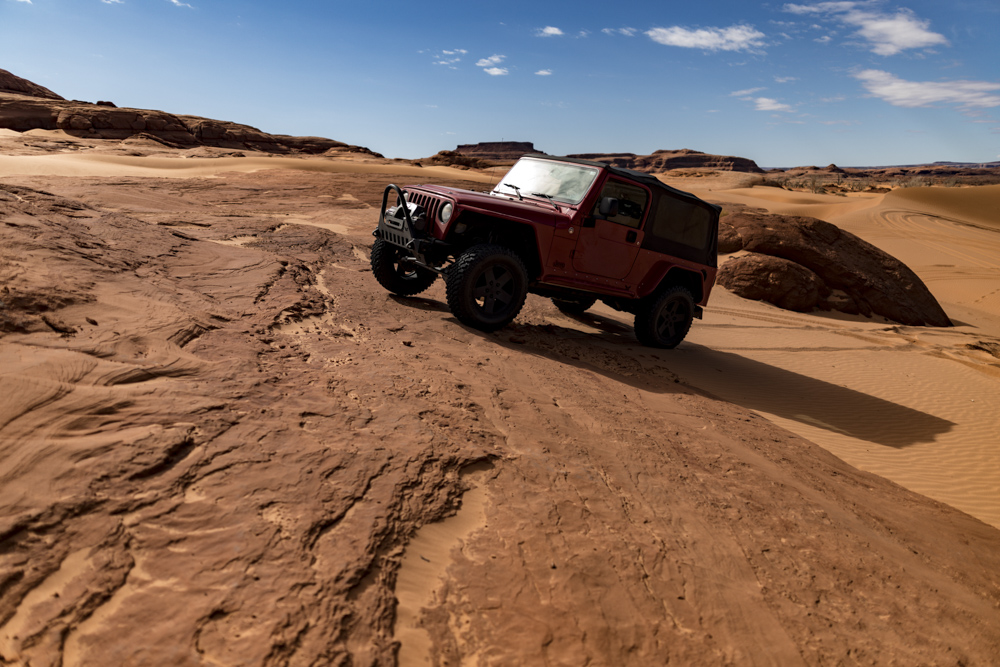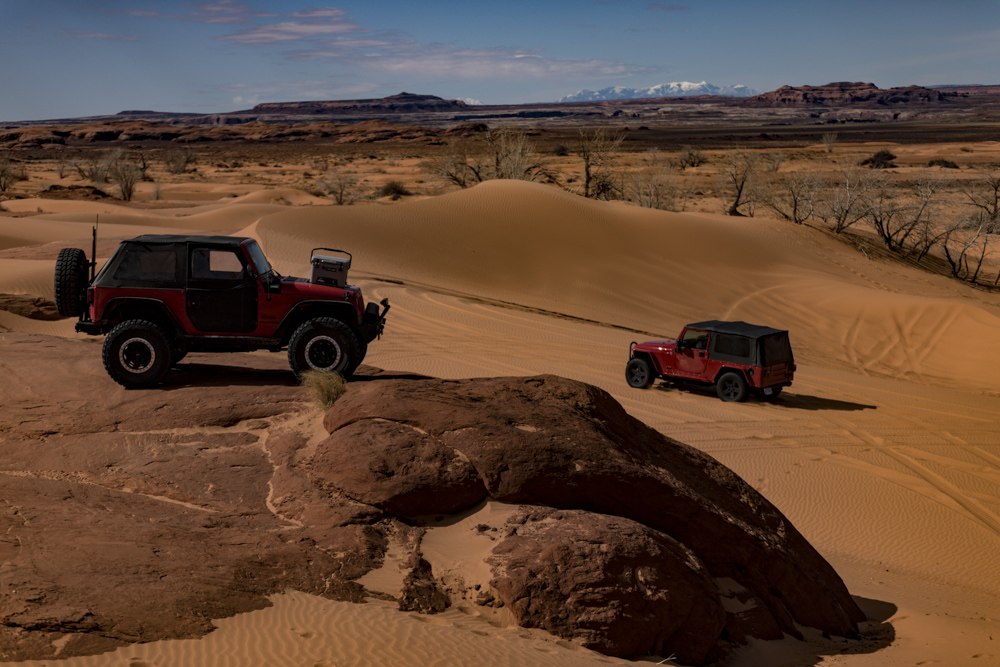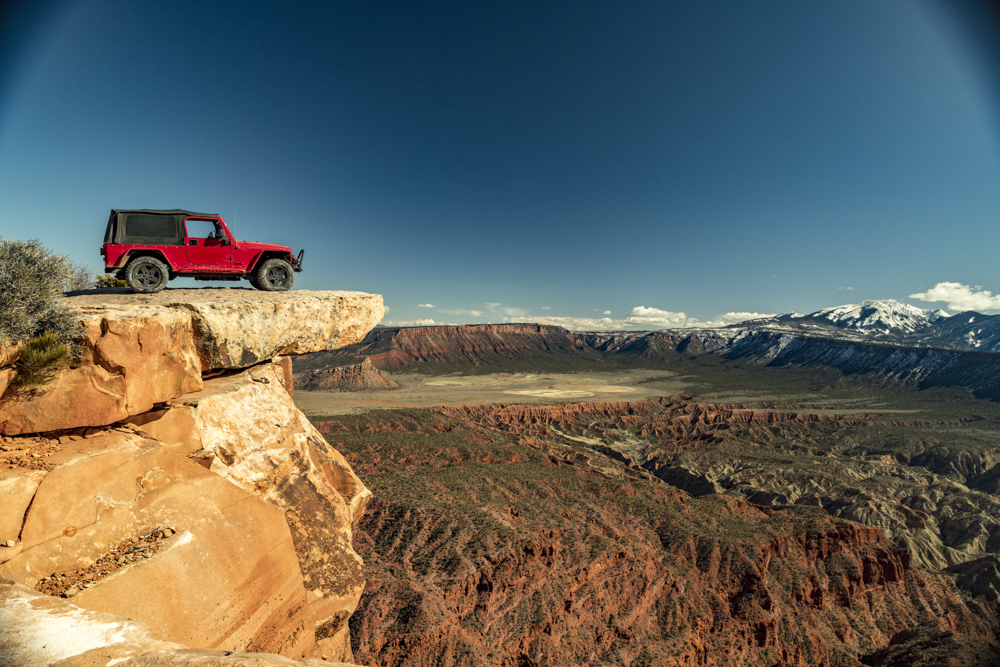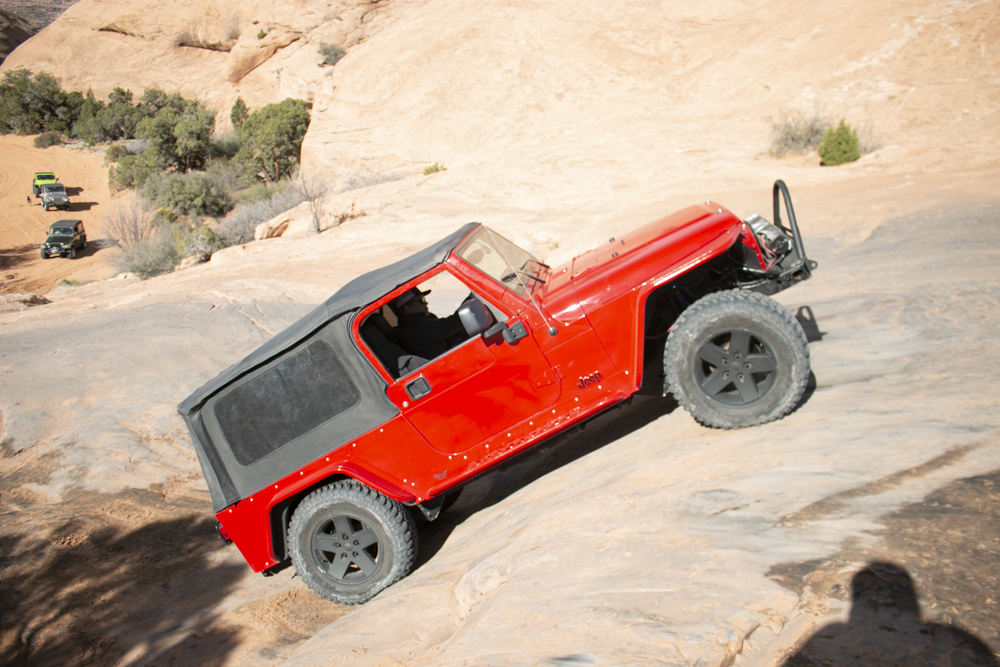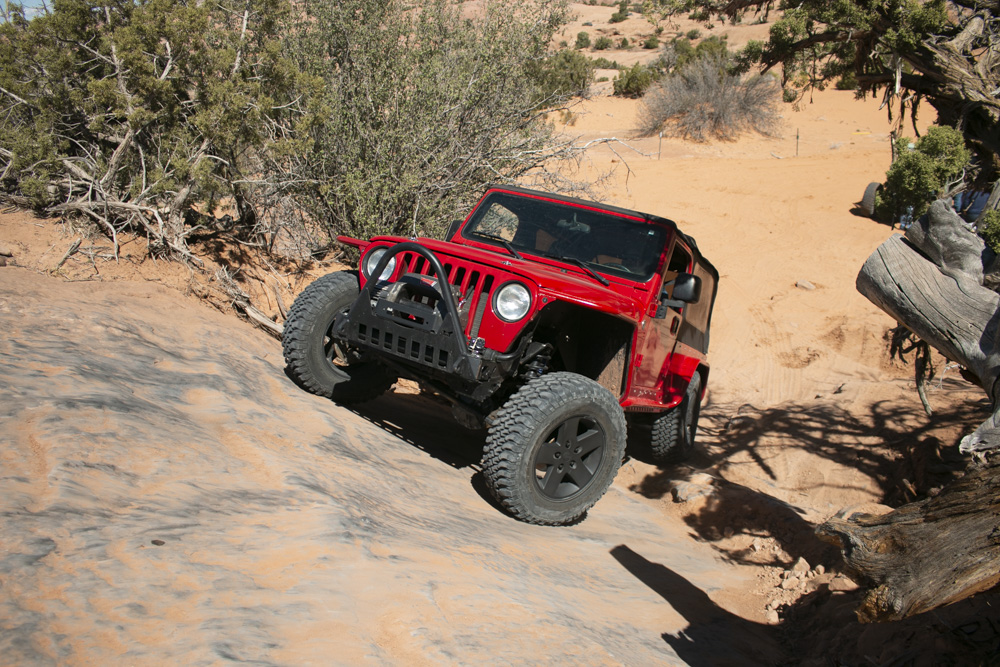Builds
The Benefits of Being Basic
Going against the grain and wheeling a small Jeep
Photos by Tom Yash and Jonathan Clifton
“Basic” is a term I use to describe an affordable rig that is still capable off-road. That rig needs to maintain on road driving capabilities, reliability, is suited for many uses, and a fun ride that gets attention. Or, it would be described in the world of Jeep Owners, Crawling, and the go fast crowd as: It’s a boring, near stock, vehicle. But, I’m here to spread the word, open some eyes, and tell you the benefits of going back to the most basic of vehicles. Here are the advantages I’ve discovered while owning, driving, and wheeling a “basic” vehicle.
Economic:
A more basic vehicle has the benefit of being an affordable investment. For me, this investment was found in a 2005 Jeep Wrangler Unlimited. The Jeep lacked basic upkeep and cleaning but overall was a tremendous value. The Jeep included a front TNT Customs bumper, winch, and rear TNT Customs Body Armor. So right off the bat we saved money on items I had already planned to purchase. That money was used to add some Solid Axle Industries Differential Covers, a Torq-Masters front locker, more TNT Customs Armor and highline front fenders. The biggest expense was hiring Rensselaer County Customs for bodywork and paint. So the bulk of funds went into protecting the body, making the Jeep look good, and adding a front locker.
With the optional highline fender package we did not need to invest in an expensive aftermarket suspension, pricey off-road shocks, or a lot of shop time doing a long arm installation. Instead, we managed to gain a significant amount of clearance for a 32-33” tire and keep everything else stock. We didn’t even need to lengthen the bump stops. For rubber we went for the best deal around factory JK Rubicon tires and wheels. I am always on the lookout for these tires and wheels because they’re often given away. We had to purchase a set of adapters but ultimately way under what we would pay just for a set of 33” tires with our wheel/tire combo.
Finally, because we largely chose to protect factory items, the prices for replacement parts is now very low. I know from previous experience that factory replacement parts are usually available for free in the scrap bin at most off-road shops. So, sourcing and replacing a bushing, control arm, or even a shock is typically very affordable, if not free.
Reliable:
Very frequently you find folks broken for a day on the trail or hovering on jack stands in the garage. Typically, they’re waiting in limbo because of an aftermarket part. These parts aren’t generally readily available at most auto part stores. Even expedited, the wait is usually a minimum 24 hours for express delivery. From what I have seen, many wear items in the aftermarket greatly outperform their factory counterpart but they typically don’t last as long. Performance gains will frequently outweigh reliability issues on trailered rigs, but on daily drivers the constant replacement is a hassle. For this “basic” Jeep we couldn’t get caught on the road to the trail and wait days. So, instead we decided to keep it the most basic.
With this Jeep, we will be riding on factory bushings, factory shocks, factory axles, and only adding items to protect the factory pieces. Our factory suspension bushings may not articulate like an aftermarket joint but they’re known to frequently reach and exceed 200k miles. And let’s say one does go bad, there is a good chance the local parts store or dealership will have a few on the shelf.
The big issues typically solved with dana 60’s, aftermarket transfer cases, and axle trusses can largely be overlooked on this basic vehicle. The factory dana 44 rear axle is more than reliable enough for 33” tires. The vehicle comes with four-wheel disc brakes so stopping will not be an issue. The factory gear ratios are still deep enough to churn the tires too. So, just by keeping a more modest tire size, we were able to keep reliable factory items that will still work well within their ability.
Utility:
A basic vehicles’ greatest quality is how useful it is in all situations. What I love about my Jeep is no matter where you drop in, it will still work great. The typical issues that arrive with overbuilt trail rigs are completely avoided. The good news: it still looks great, it works well off-road, it handles great on the road, and it’s still a vehicle that you can drive to normal functions.
This basic Jeep gets a lot of comments from all types of people. The color match armor makes it look largely factory but still showcases some overlanding flare. The expedition look is becoming more and more popular, so this is fitting in with that crowd. It’s not over the top, blends in well with most environments, but still attracts an eye for folks aware of the potential changes.
On and off-road capability is taken to a new level. The increased ground clearance allows the Jeep to travel over larger rocks and obstacles. The lower center of gravity achieved from the highline kit keeps the Jeep glued to the ground on off-camber trail obstacles. That same lowered center of gravity helps maintain on road handling and performance in the corners. The marginal increase in tire size allows for similar braking and acceleration. But that larger diameter improves vibration transmission on smaller obstacles (cracks and bumps in the road). When you’re driving down the road you don’t have to worry about loose steering or larger than normal blind spots causing a potential traffic collision.
The best feature of this Jeep is, it’s not an eye sore. It still has the same function as factory. You can drive it in a funeral procession or to a social function without fear. The lower overall height means your grandmother or others with limited mobility can still enter and exit the vehicle with ease. There are no major hurdles in registering and insuring a basic vehicle. Cops won’t pull you over to measure your bumper height or tire coverage. Overall this basic vehicle is good basically everywhere and under the radar for local law.
Smiles Per Mile:
I love this basic Jeep because it provides more entertainment than any big build I’ve owned. It gets more attention on trailheads. The fuel economy is still very acceptable. Folks are not scared to try to enter or ride in it. And people still really enjoy seeing it almost everywhere.
I seriously get excited on trailheads these days when I drive the Basic LJ. Folks go out of their way to talk to me and ask me questions. The questions go like this: “Have you been on this trail before”, “How big of a tire do you have”, “are you going to try that climb over there” and “are you sure you want to take that up here”? Basically, everyone is surprised I’m out there and sure that I’m about to ruin a perfectly good vehicle. While in Utah we encountered this on every trail. Folks seemed confused and there is nothing funnier than driving past them or up and over an obstacle they’re “considering”.
In my basic LJ, I can spend an entire day on a trail trying modest obstacles. On slow trail days the small obstacles everyone will overlook, I need to plot in my basic vehicle. I get much more out of the trail and the day than the folks hoovering over these same obstacles. On the big obstacles I’m not expected to make, if we make them, or even try to make them, we are heroes to the folks watching. We seriously received cheers for making a steep climb I thought was easy. This same climb that I’ve climbed a dozen times in other “built” vehicles where we were expected to make the climb.
You can see and feel this excitement because we all started out here. Most all wheelers start by driving vehicles that are modest. It’s not until you break on the trail a couple dozen times, after you upsize tires a couple times, do you make serious build upgrades. While these upgrades are great, and they’ll take us a lot further on the trail, there is something lost in that transition. The small obstacle entertainment, the function on road, and even the ability to take the vehicle on a date are almost all lost. The versatility of a runaround basic Jeep is unbeatable. It took me this long to realize I can keep my jeep basic if I can keep the skinny pedal off the floorboard and keep the tire size in a more modest range. By doing this I also keep money in my pocket.

